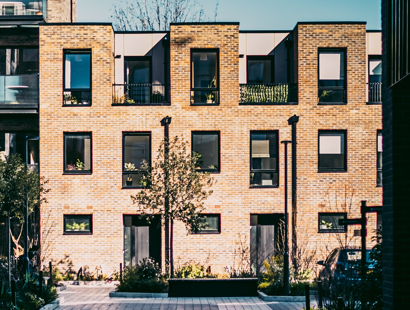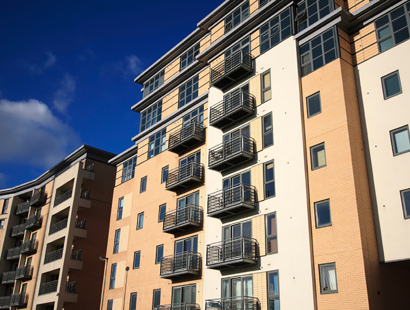
What is a commonhold?
Commonhold is a system of ownership and management of property that can be employed in residential, commercial, or mixed-use developments. It was introduced by the Commonhold and Leasehold Reform Act 2002.
A commonhold is made up of individual properties (units) and common parts. Commonhold units may be flats, buildings, or parcels of land. Freehold interests are owned by “unit holders”.
The ‘common’ parts of the commonhold are owned and managed by the unit holders through a commonhold association.
Commonholds provide an alternative to traditional leasehold form of ownership. While sometimes created as part of a new freehold development, an existing leasehold structure may also be converted to a commonhold.
The commonhold association
A commonhold association is a company, limited by guarantee, which owns the freehold of a commonhold’s ‘common parts’.
The Commonhold Regulations 2004 require specific articles to be included in the articles of association for each commonhold association.
Each unit holder can become a member of the company and take an active role in decisions affecting ownership and management of the commonhold.
Managing the commonhold
The commonhold association’s board of directors, appointed by commonhold association members (i.e. unit holders) oversee the association’s day-to-day management functions.
The directors may be unit holders. However, members can appoint managing agents or other external professionals with expertise in property management.
The board determines the budget for management, insurance, repairs, and maintenance of the common parts (the ‘commonhold assessment’).They also notify unit holders of what they must contribute to that budget.
Commonhold Community Statement
The Commonhold Community Statement (CCS) provides a framework for governing the commonhold. It is a standardised document which must follow the structure set by the Commonhold Regulations 2004. However, it is possible to introduce specific local rules.
The CCS is not effective until it is registered at the Land Registry. Once registered, it becomes a public document. This makes it accessible to all existing and potential unit holders.
The CCS must define the physical boundaries for each unit and common areas. It sets the commonhold allocation – each unit’s percentage contribution towards the commonhold assessment – and any reserve fund. It also determines unit holders’ voting powers.
Like a properly prepared lease, the rights and obligations of unit holders (equivalent to tenants/leaseholders) and the commonhold association (equivalent to a landlord/freeholder) are contained in the CCS.
Dealing with internal issues
Should disputes arise among unit holders, or between unit holders and the commonhold association, the CCS provides a dispute resolution procedure which should be followed before formal legal action begins.
This process is designed to achieve settlements that are in the best interests of the commonhold and the unit holders.
Advantages of the commonhold model
Commonhold was introduced to address and avoid the shortcomings of leasehold ownership. It provides several benefits.
Freehold ownership
Property owners do not hold an interest in their property that diminishes over time. By contrast, leases are time-limited, and extensions to their terms can be expensive.
Standard rules and regulations
Commonhold provides a standardised set of rules and regulations.
The CCS and supplemental documents are held in a standard, consistent form. This provides commonhold members with certainty, which should allow for a simpler (and cheaper) conveyancing route to home ownership.
Decision making
Unit holders are given collective control and the ability to make key decisions about their building’s day-to-day management, as well as the costs involved.
Each unit holder has a stake in their wider building, and can work with the others to make decisions about shared areas.
Buildings are not managed or controlled by landlords or management companies, who may not fully know the building or understand the needs of its residents.
No ground rent
Owners must pay the costs associated with maintaining the building and, accordingly, have some control over that expenditure.
The Leasehold Reform (Ground Rent) Act 2022 will put an end to ground rents for any new long-term residential leasehold properties in England and Wales, bringing the leasehold and commonhold models into closer alignment. The 2022 Act will only apply to new leases granted after 30 June 2022.
For now, ground rent continues to be charged under many existing leasehold structures.
Commonhold framework deficiencies
While the commonhold ownership model was introduced in 2004 residential flats are almost all held on a leasehold basis.
Mortgages for commonhold property buyers
Mortgage lenders unfamiliar with the commonhold model, have been reluctant to lend against commonhold properties.
It is hoped the Law Commission’s proposals and reinvigoration of the current system will reassure potential lenders.
Familiarity with its advantages may encourage lenders in England and Wales to follow the example of lenders abroad, e.g. the United States and Australia, where commonhold has been embraced.
Enforcing CCS obligations
The solvency of the commonhold association relies on payment of commonhold contributions.
As a commonhold association is a company limited by guarantee, there is a risk of insolvency whenever an association cannot meet creditors’ debts (e.g. a gardener’s invoice or engineer’s demands).
Dissolution of an association poses further difficulty and risk: the association owns the common parts and has responsibility over upkeep, repair and insurance.
The Law Commission wants to minimise the risk of insolvency, and ensure (as far as reasonably possible) unit holders are not at greater detriment than leaseholders. Their recommendations are intended to protect unit holders and ensure limited liability.
CCS “local rules”
Incorporating local rules into a CCS can allow unit holders to make decisions specific to their building. However, those rules can be updated over time, and the threshold for voting through changes is a simple majority of over 50% of the unit holders.
Some individual unit holders may feel vulnerable to rule changes that would disadvantage them. To address this, the Law Commission has proposed an increase in the voting threshold to a special resolution (at least 75%).
Shared costs
The statutory form of CCS requires unit holders to make “commonhold contributions” into a designated fund for the commonhold.
It has been suggested a separate system of “pools” be introduced, so contributions and costs can be allocated, as some expenditure will benefit some units and not others. For example, only unit holders with a parking space might contribute to car park maintenance.
This would mirror the flexibility of well-drafted leasehold service charge regimes, and allow unit holders to have greater control over commonhold expenditure.
Reforming commonhold
The Law Commission has made proposals and recommendations to improve the appeal of the commonhold model.
Recent recommendations aim to facilitate an equitable and cost-efficient alternative to the leasehold system.
If implemented, the recommendations should increase confidence in the commonhold model for key stakeholders.
Since publication of the Law Commission’s report, the Government has encouraged collaboration between leasehold groups, the property industry and government departments. The aim is to prepare homeowners and the property market for the adoption of commonhold.
Creating a commonhold
Developers must apply for a new commonhold development to be registered at the Land Registry before any units can be sold.
One of the first steps is to obtain the permission of all owners of the land, and anyone with a registered charge over the property.
The developer will also be responsible for registering the commonhold association at Companies House and for drafting the CCS.
The freehold titles to the common parts and all individual commonhold units will initially be registered in the developer’s name. This remains the case until the sale of the first unit.
When this happens, the commonhold will then come into existence: the commonhold association will take ownership of the common parts and the CCS will come into force.
Converting a leasehold
An existing leasehold scheme may be converted to a commonhold. This requires the permission of the freeholder and anyone with a registered charge over the freehold.
The unanimous consent of the leaseholders is needed, along with permission from any lenders whose mortgages are secured against the respective leasehold interests.
One of the Law Commission’s proposals is to reduce this threshold to 50% of all leaseholders (with protections being implemented for non-consenting leaseholders).
Under the proposed system, the land would be registered as a commonhold and the commonhold association would become the registered owner of the common parts if the consent threshold is reached.
The leaseholders named in the application would be registered as unit holders and become members of the commonhold association. Their leases would end, and the rights and obligations they contained replaced by those in the CCS.
Get in touch
If you would like to speak with a member of the team you can contact our property law solicitors by telephone on +44 (0)20 3826 5010 or complete our enquiry form.





